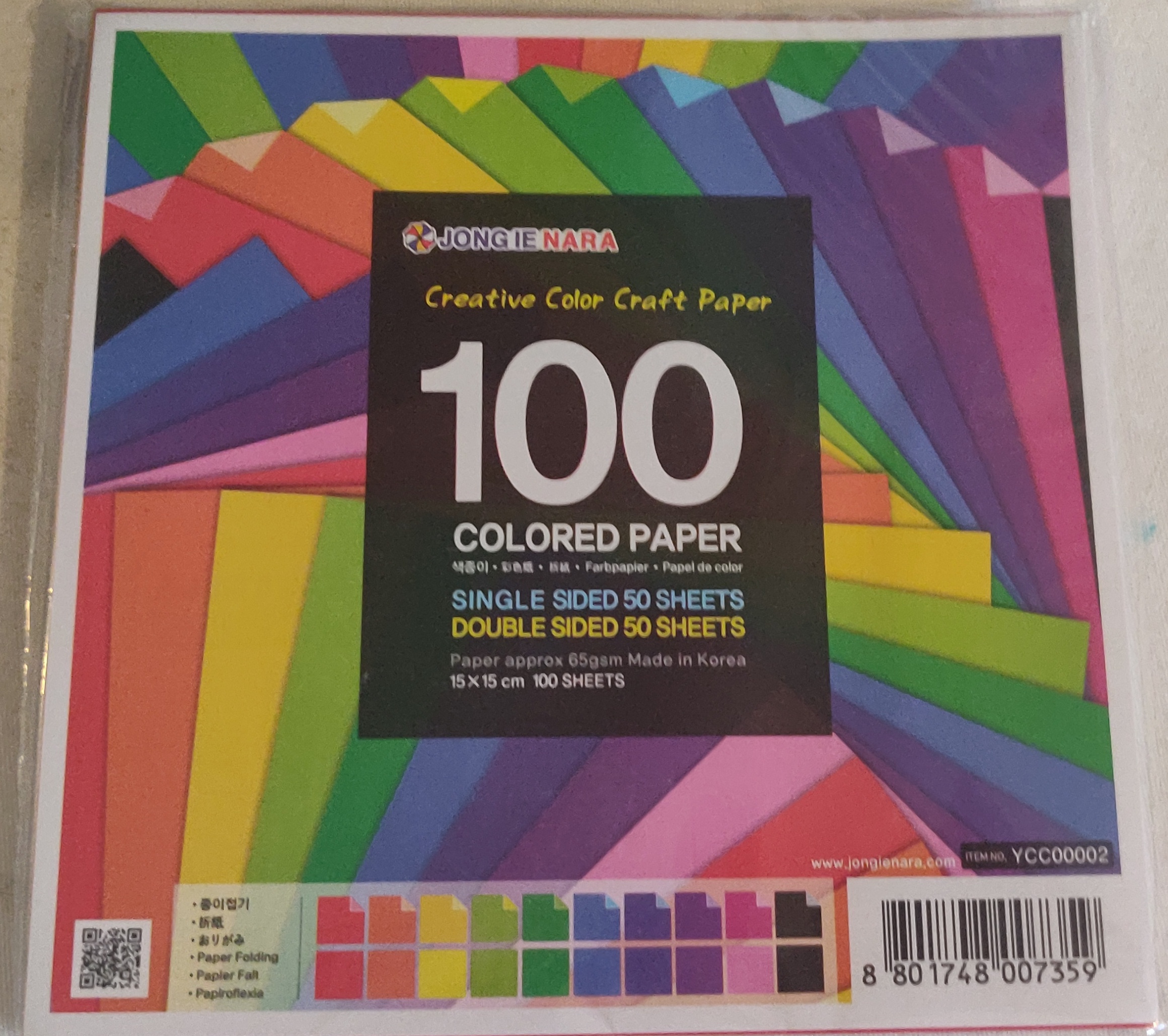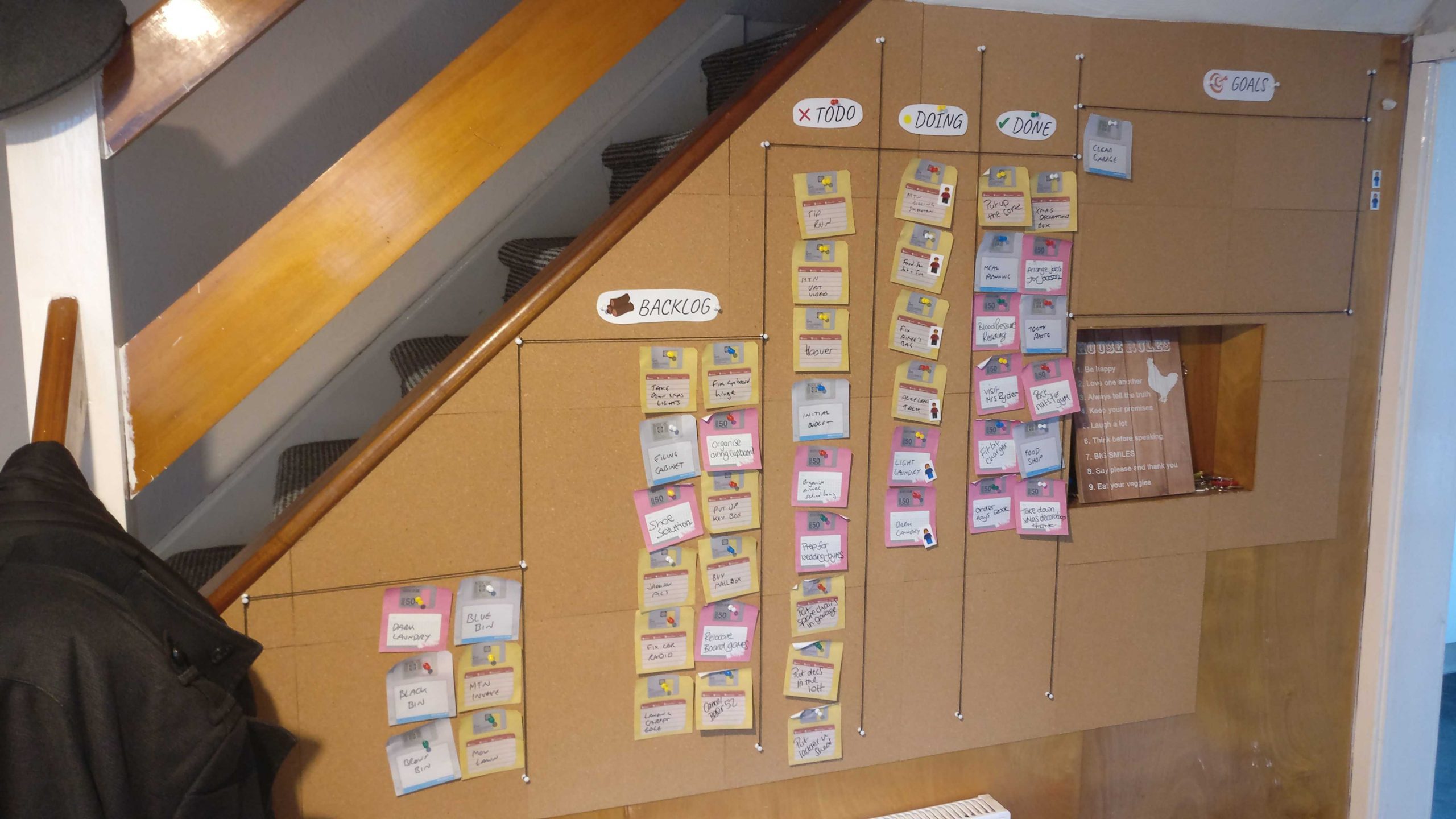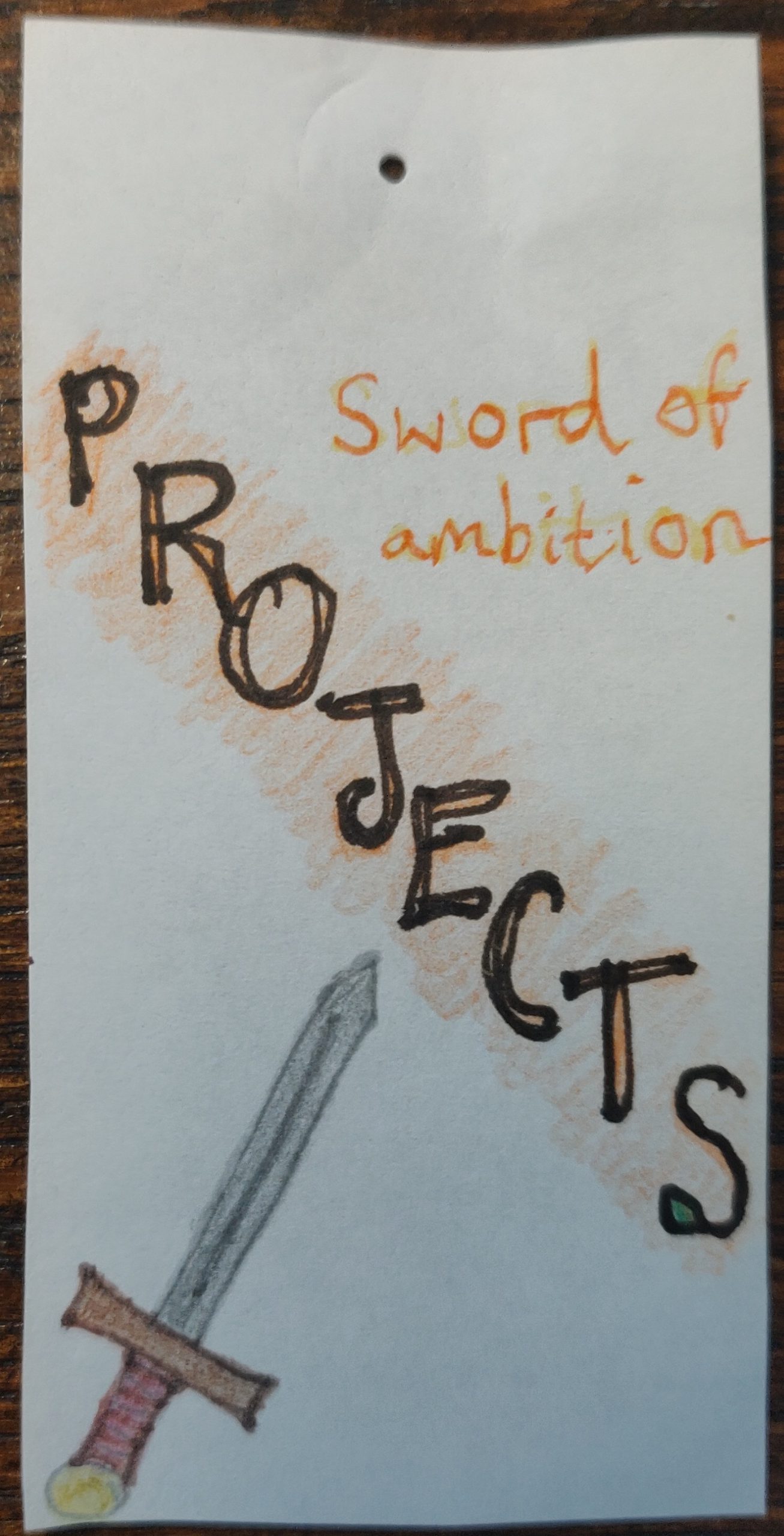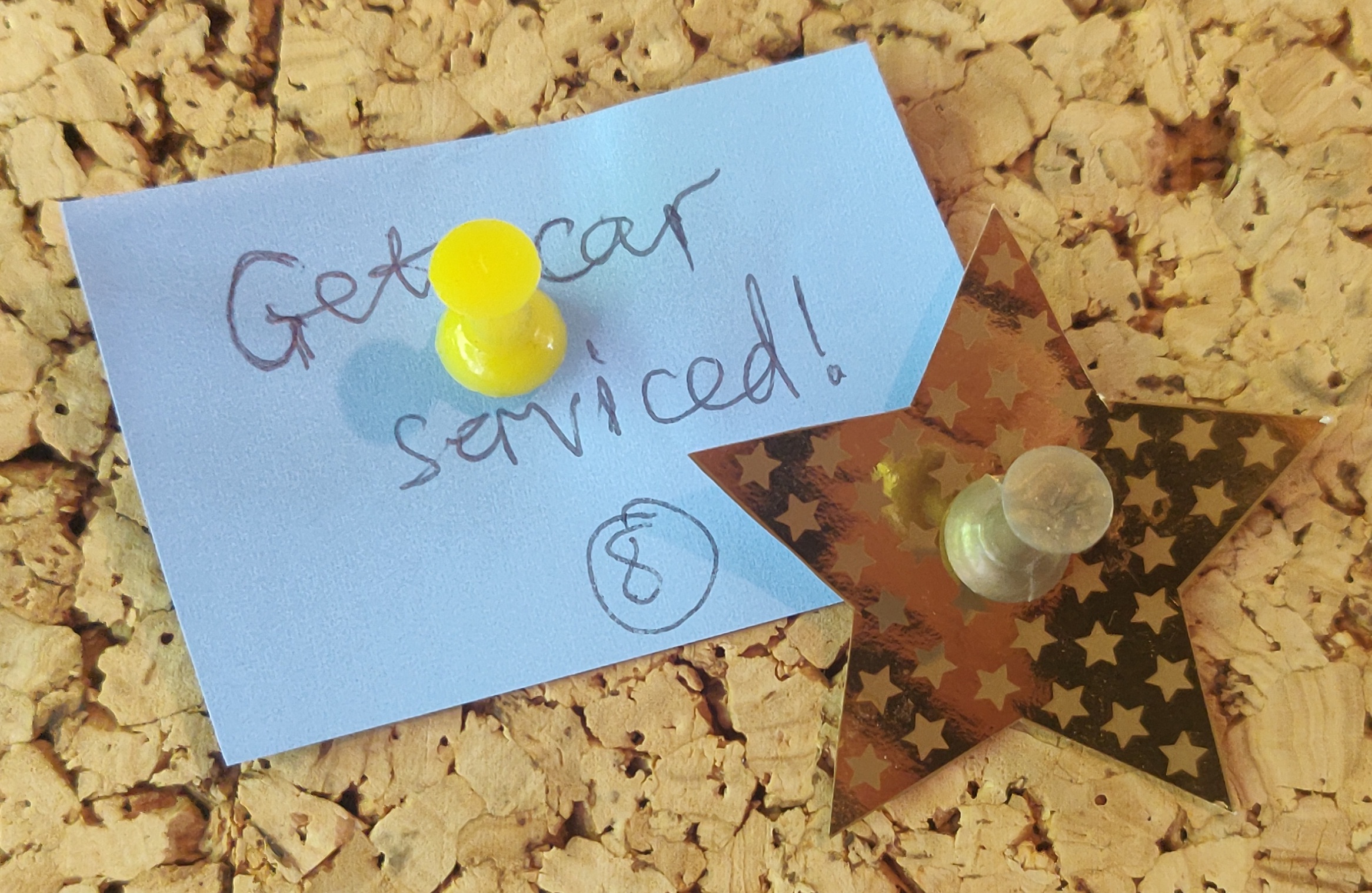Slow Track | But still not the whole blog

What Scrum is
Scrum is a way of organising a small group of people to work together. The whole system is defined fully in the Scrum Guide, which is only 12 pages long. It involves using a board with columns represe
Start Home Scrum now using check-lists
How to get the most out of this blog This blog is written with the most possible emphasis on helping you to put the ideas into specific action immediately. In this post, there are check-lists of all t
TL;DR: Summary of the whole Home Scrum blog as bullet-points
Too long; didn’t read? No problem. Please find below a bullet-point list summary of Home Scrum of nearly all the ideas included in this blog. Finding your Home Scrum team Scrum is meant to be us
Who Home Scrum might be useful for
Who could benefit from Home Scrum? Scrum is used to help small groups of people to generate “adaptive solutions for complex problems.” A lot of things fit in the category of a complex problem, inc
Why accepting help is hard
During my final year studying Music at Cambridge University, I was riddled with perfectionism and careening towards total burn-out. Eventually, I had such a bad anxiety attack that my parents explicit
How to ask for help using Home Scrum (with scripts)
What you are actually asking for It is a good idea, and a sign of respect, to ask for specific help when approaching someone. So, what are you actually asking someone in your Home Scrum team to do? He
Who to choose for your Home Scrum team
How to choose your team You need at least one other person to do Home Scrum. You can have more than one—the official Scrum Guide states that a Scrum team should be small, “typically 10 or fewe
Feeling safe with others is a tricky business: power dynamics and drama triangles
When Google did some research on teams, the main, and really, only common factor among high-performing teams was a sense of ‘psychological safety.’ This meant that all team members felt able to be
“A sense of poisoned rationality”: our standards and ways of working are emotive, not objective
Ways of working are emotive Over several years of thinking about ‘ways of working’ at both a corporate and a personal level, I’ve come to the conclusion that people care a lot about doing things
Stuff to get for doing Home Scrum
Gathering your equipment You don’t need much to do Home Scrum, and you likely could improvise solutions from what you already have. But you may want a bit more in the way of equipment, and if so, th
How to find a good space for your Home Scrum board
The very first decision to make when getting your Home Scrum system set up is where you should put your board. It needs to be somewhere where you will see it frequently. If it is tucked away in a
Why a physical board is better for Home Scrum
Why a physical board matters I strongly recommend using a physical board for your Home Scrum system. There are dozens of digital Scrum board options (or column-based to-do lists)—the one most often
Some Home Scrum board layouts, from simple to overly complex
At the heart of the Scrum framework is the Scrum board. It’s best to use a real, physical board, although it doesn’t matter whether it’s a cork-board or white-board, or even just a demarcated pi
“It’s like Lego” – Why Home Scrum works well (especially for neurodivergence)
It’s like Lego: modularity, atomisation and externalisation Something that makes a Scrum board different from a to-do list is that every task is written on its own, discrete piece of paper. The task
Burn-up charts & story points: the weird world of intrinsic motivation
Capturing a task for your Scrum board is as simple as grabbing a small scrap of paper, jotting the task down, and putting it on the relevant place on your board. This is all that is required by offici
The Standard of Standards and the Sword of Ambition: thoughts on two types of goals (and how to set good ones)
Even at a job, work is not just one type of thing. This is even more true at home, where the work of life can vary wildly. So it can help to think about what we want to get done (our goals) in terms o
How to do the Home Scrum events
What are the Scrum events? In Scrum, we avoid the term ‘meeting’ because even inside the corporate world, it has too many negative connotations. They used to be called ‘ceremonies’ but now the
Different flavours of Daily Scrum
The main purpose of your Daily Scrum is to meet as a whole team in front of your Scrum board and share your progress and obstacles, ideally towards your Sprint Goal. It is time-boxed to fifteen minute
Ideas for your Home Scrum retrospective
The Sprint Retrospective, as the name suggests, is a chance to retrospectively reflect on the last sprint as a team and consider how it went. As the Scrum guide says, it is for the team to “plan way
Iteration: inspect, adapt, play
The importance of iteration in Scrum cannot be overemphasised. But why do we put such weight on the idea of repeating stuff? Be empirical One major reason why Scrum is more effective than other (for w
Things you don’t think of as work that are actually work
What counts as work? Here’s an incomplete list of different types of work: Working for money (a job) School work (or learning in general) Housework Child care Other care (e.g. for elderly relatives)
Procrastination: listen to your own cry for help
I’ve been meaning to sit down and finish this post for the last two weeks or so. I am finally doing it now because my friend Alex has offered to act as an accountability aid by sitting with me while
Aim Low, Do Less, Go Easy: how to be kind to yourself
How do we scour the scourge of perfectionism from our minds? Well, to do that, we need to be asking how to be kind to yourself. Remember, productivity isn’t the be-all and end-all of life. There are
Your requirements (for life) are dumb: how to tell if you’re on the right track
We receive many cultural messages throughout life, and one of these, at least in the West, is ‘be productive’. It’s a loud enough message that it can seem like an obvious requirement
How to plan (and how to make planning less overwhelming)
The purpose of planning I used to think that the point of planning out my time was to fit more into my days. By cleverly combining certain errands into one trip, squeezing tasks in the spaces between
Extra ideas for gamifying your Home Scrum system
There are many ways of expanding on the basic Scrum framework, and in this post I have put together a bunch of suggestions for extra things Francis and I have used that have helped us to get more out
Focusmate
If I could give people with ADHD one website to help them, it would be Focusmate. For a very reasonable monthly fee of $5, you can link up with another person online to complete a fifty minute block o
Bullet journaling
Bullet journaling is the system I would recommend for neurodivergent people to use if you can’t find others to do Home Scrum with you. The bullet journaling system was designed by a developer with A
Meditation and Mindfulness
You don’t need any technology or tools to practise mindfulness (although the meditation apps Headspace or Balance are good places to start learning about it). When I was trying to think of thing
Counselling directories
When considering how to live a good life, any self-help resource that doesn’t mention mental health is not considering the full picture. To that end, I wanted to mention how to get an accredited cou
Other thoughts on living a good life (An incomplete list)
This post is going to provide a quick overview of three of the main ways I’ve tested out about how to be a good person. The kyriarchy You probably know what the patriarchy is: the system built i








































